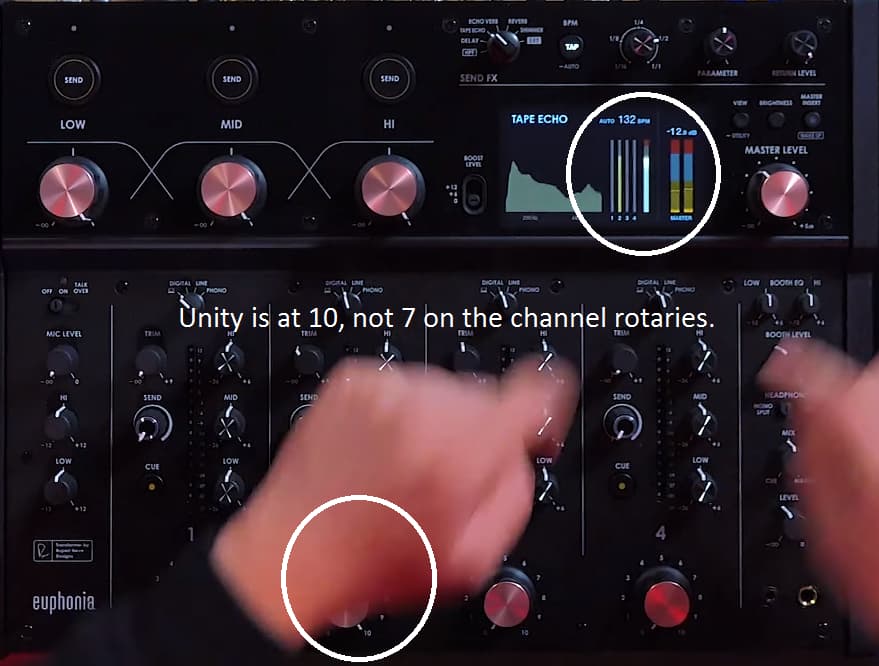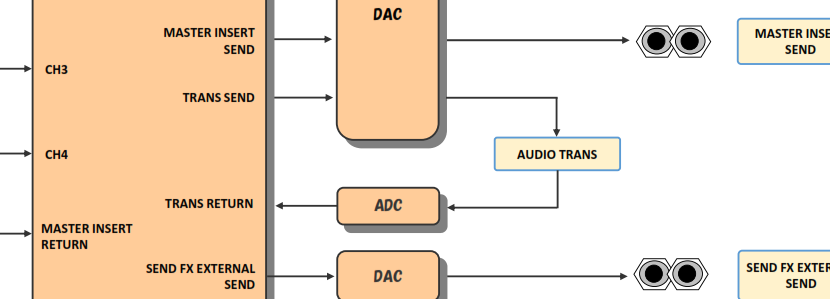
Originally Posted by
Reticuli

Correction. None of the Master Sounds actually have iso bypass. V10 has one.
Edit:
I have listened to a pair of high bitrate lossless clips recorded to an interface and ones that were sent through various mixers including the Euphonia & recorded to the same interface. The V10 is more reference/source. The Rane even more so, like it's just the interface with that source content. If measured, you'd only get a little added phase distortion from the Rane tone controls' filters. The core sound to me on the Euphonia is arguably roughly halfway between the NXS2/A9 & V10 if the two were at other sides of a continuum, but the transformer definitely does something.
The saturation difference is most obvious looking at a spectrograph and especially at the raw waveforms. Most evident on higher amplitude portions and peaks, giving it a subtle expander effect or very crude analog version of declipping plus coloration harmonics. At first blush, it sounds like it's mostly V-shaped added harmonics distribution, but looking at the waveforms and spectrum it's apparent the mids are getting them, too. Perhaps just sounds that way because the kick and presence regions are both just more obvious to the ear, and those are where the music's peaks are getting more of these harmonics. It's a bit like what happens with something passed through some tube emulators or, you're right, like a Urei. I think it's more refined-sounding than a Urei, though, and the expander sensation is welcome.
The midrange harmonics seem pretty tame to me, though. Along with the reduced microphonics, I can see this getting less congested than tubes with dense source material when pushed, but what the Euphonia does to the sound seems more simplified tonally than tubes, ignoring the slight expanding quality. Maybe you can't do exactly what transformers do with tubes and vice versa. The Pioneer digital mixer beat bloom has an added touch of thump overlaying & obscuring it instead. The high hats aren't more polite (the NXS2-onward have been polite) or more grating & tinny (pre-NXS2), but like the original transient is both slightly dulled and with more associated side-energy, yet coming off as strangely less synthetic. I was not expecting barely softened attack and added harmonics to seem less artificial. Anyway, some who just rabidly find the Pioneer mixer sound objectionable (bloom in the lows, synthetic highs, etc) will probably prefer what the transformer is doing to it.
I still don't totally get why they didn't allow us to source the USB main out pre-DAC apart from the transformer, and I don't get why they left out a SPDIF or AES/EBU digital out to also bypass the transformer and choose our own DAC stage. Now that I've realized they're looping the transformer out (trans send) through an ADC stage back into the mix, it's an even weirder bunch of choices. Maybe they really wanted to make a certain impression with people and didn't want you to be able to bypass any of it... iso, DAC, or transformer. You go onto a Euphonia, and it's going to impart a certain sound. Heck, maybe they didn't want people able to easily demonstrate that the pre-DAC & pre-transformer digital bit stream is not largely different than their other recent models.






 Reply With Quote
Reply With Quote







Bookmarks